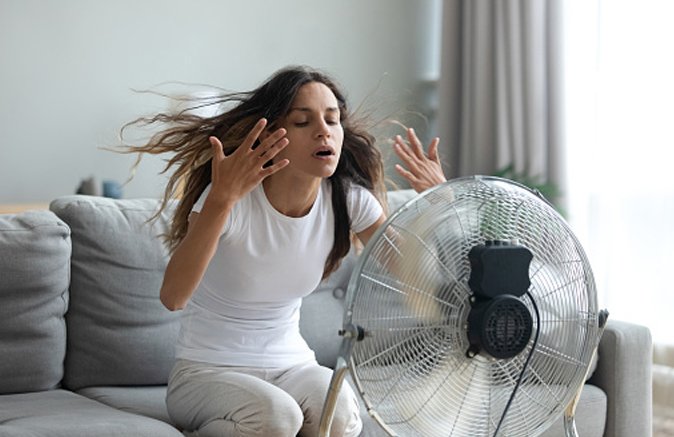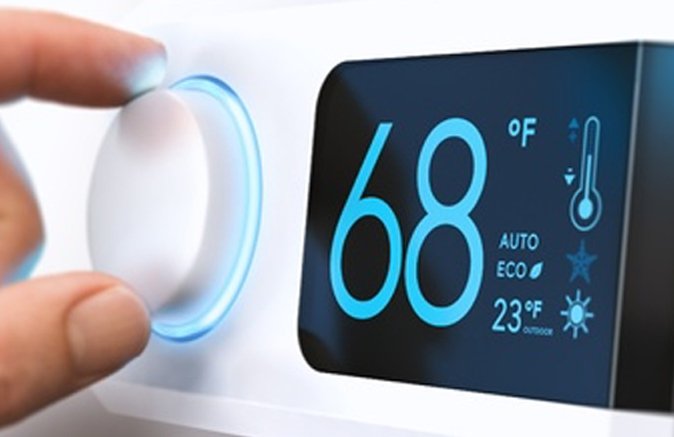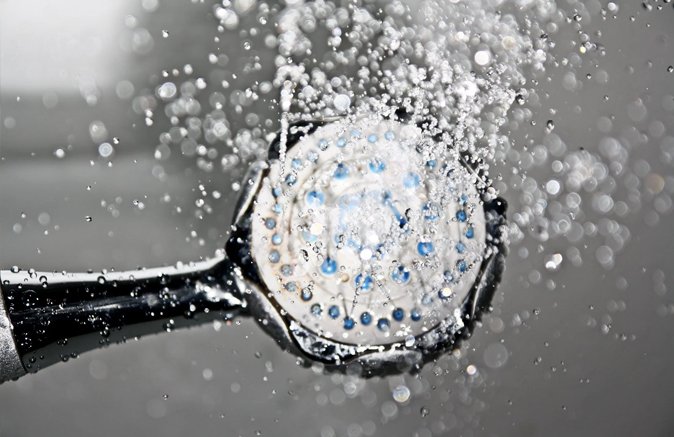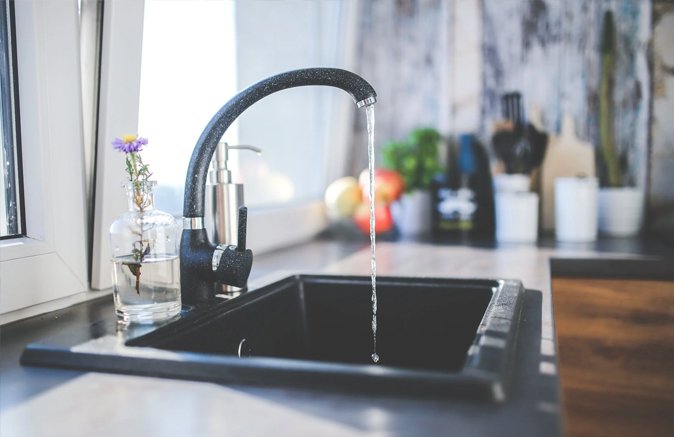How to Save Money on Utilities: 14 Energy-Efficient Tips That Could Save You Thousands of Dollars
Here at Savvy, all featured products are thoughtfully handpicked by our section editors. When you purchase something from our links, we may earn an affiliate commission. One last note — any items listed below are in-stock with accurate pricing as of time of publication.
Home is where the heart is, as well as the heart of our utility expenses. With the weather getting warmer, most households will expect to put more money towards powering up the A/C to stay cool. The truth is, utility costs don’t have to be a bummer: hidden savings in your home are waiting to be uncovered year-round.
With these super easy household hacks, you can cut costs on utilities and make your home much more efficient. In the process, you’ll use fewer resources, turning your home and lifestyle more eco-friendly while allowing you to increase your monthly and yearly savings. Whether you’re ready for big or small changes in your utility usage, we’ve got some great ways to save.
How to Save Money on Utilities in 2023
1. Keep track of your energy use, and use it outside peak hours.

One of the biggest ways to save money on utilities is to understand how you’re using your energy, and to use it wisely. Not sure where you use most of your energy? Try a home energy audit: an auditor comes to your door and examines each room, looking at your previous utility costs and locating factors (including drafts and cold spots) that contribute to your energy expenses. With their help, you can see where you’re using the most energy and adjust your home and habits accordingly. Best of all, many energy companies will do it for free.
You can also save more on energy costs by using big appliances outside of peak hours. Many electricity suppliers offer a discounted rate for energy use outside of peak hours, which typically run from late afternoon into the evening. Run a full load in your dishwasher or laundry before bed and save a considerable amount on your electricity bills.
2. Use fans instead of air conditioning — and have them spin clockwise during the winter months and vice versa.

Hot summers may tempt us to run the A/C all day, pushing our electricity costs up. Instead, opt for good room fans to cool off, or check out home improvement retailers like Home Depot or Lowe's for a ceiling fan. And if you’re using the A/C, you can get more out of it using your ceiling fan. Ronnie Kweller, spokesperson for nonprofit Alliance to Save Energy, says it helps the cool air disperse, and you can comfortably raise the thermostat up to four degrees.
The direction of your ceiling fan also makes a big difference in keeping utility costs down. When fans spin counterclockwise, they create a wind chill breeze by drawing cold air upward. In the winter, reverse your ceiling fan so it spins clockwise: it pushes any heat that rises down the walls for extra warmth. More up-to-date models give you the option to reverse directions and set a timer, so reach for your ceiling fan before turning on the A/C or heating. It’ll save you money while keeping you comfortable through all seasons.
3. Keep all vents and filters clean.

Do your due diligence and clean the vents and filters in your home: replace the A/C filter every three months. The Department of Energy reports that this cuts down energy use by 15 percent. Not only does it improve the air quality of your home, but it also takes the strain off your heating and cooling system so it can run more smoothly. There’s also another bonus: it prevents repair costs, as changing the filter regularly keeps your heating and cooling system from breaking down. It’s a win-win situation all around.
You can also save money on annual utility costs by regularly cleaning the lint screen in your dryer. It ensures that your dryer runs efficiently, cutting down the amount of time your loads take to dry. It also has another practical use, as keeping a clean lint screen prevents clogs in the dryer vent, which can also result in house fires. And for maximum dryer efficiency, have the dryer vent professionally cleaned once a year; it keeps your dryer in tip-top shape.
4. Upgrade to energy-efficient options.

If you have energy-guzzling appliances in your home, consider switching to energy-efficient appliances from retailers like Frigidaire and Samsung. Refrigerators tend to use a lot of energy, though newer refrigerator models carry major tech upgrades and use up to 30 percent less energy according to Energy Star metrics. Run through a list of your major appliances, especially larger ones that use a lot of energy, and do your own audit: if it’s outdated or at least a decade old, you may want to consider shopping around for more efficient options.
And if you need even more of an incentive to upgrade your appliances, some states, including California, offer rebate programs for replacing your old appliances with more efficient ones. Think washers and dryers, dishwashers, water heaters, and air conditioning — all of them are game.
5. Unplug unused electronics and appliances.

A simple but effective solution for saving on utilities: keep your electronics and appliances off when not in use. They tend to siphon energy even when you’re not using them. Case in point: charging your phone overnight. Even if your phone battery is full, leaving it plugged can add to your utilities over time.
Save yourself the effort of unplugging unused electronics by using smart power strips. When a device is in standby mode, the strip automatically shuts the power down. For appliances, try a surge protector: it’ll allow you to turn all your appliances off at the end of the day so you save money while you sleep.
6. Keep seals and ducts tight.

This is a big one: check if the seals on doors and windows are tight, and that your heating and conditioning system ducts are properly sealed. Doors and windows often leak heat during winters and cool air during the summer. Luckily, it’s a quick fix: use curtains or sealing strips to keep window drafts out, and install draft stoppers underneath your door.
With air conditioning and heating systems, inspect your ducts, which distribute conditioned air in your home. Energy Star, a program established by the Environmental Protect Agency to promote energy efficiency, reports that homes usually lose 20 to 30 percent of conditioned air from their heating and cooling systems from leaks and holes in ducts. That means that it takes more energy to keep your space at the perfect temperature, adding to your utility costs. You can hire a professional to inspect and seal your ducts, which reap big rewards over time.
7. Make small adjustments at home.

Implementing little changes in your home can make a big difference. Refrigerators tend to use a lot of energy, so turn the fridge and freezer temperature down a notch for easy utility savings. If you don’t need ice that often, turning the ice maker off saves you around 20 percent on electricity costs. You can still have ice; just turn it back on for occasions or warm seasons and off during cooler weather.
Another quick tip that curbs utility costs is adjusting your thermostat by a few degrees. According to the Department of Energy, you can save around 10 percent on heating and cooling costs by turning the thermostat down seven to 10 degrees for eight hours a day. Keep your heating and cooling system off when no one is home. If you prefer to have it done for you, there are programmable thermostats that do it for you. Some thermostats even have smart home integrations, so you can control the A/C far away from home.
8. Save water in the bathroom.

There are simple fixes for bathroom fixtures that contribute to your water bills. While taking shorter showers can help, you can enjoy longer showers and cut down your water usage by installing water-saving showerheads and faucets. Your local hardware store carries aerators in your faucets that distribute water more evenly, so it takes less water to wash and rinse your hands and dishes. You can also put water-conserving toilets in place, so you save water with every flush.
Also check for leaky faucets, showerheads, and plumbing; a shower that leaks 10 drips every minute can equal 500 gallons per year. It’s easy to check for leaks; just check your water meter before and after a two-hour window when your household isn’t using water. If the meter changes, it means you have a leak. Faucet leaks are easy to fix, so putting a bit of effort into fixing your fixtures makes a big difference.
9. Lighten the load on your water heater.

Unless you take your showers scalding hot, you can adjust your water heater’s temperature slightly and still enjoy hot water. Water heating makes up about 18% of household energy use, and the average household spends $400 to $600 every year on water heating. Lowering a water heater by 20 degrees can save you 10 to 15 percent on your bills. The Department of Energy’s recommended water heater settings top out at 120 degrees Fahrenheit instead of the standard 140 degrees.
You can also save on water heating costs by washing clothes in warm or cold water. Doing your laundry in cooler water extends the life of your clothes, and washing your clothes only in cold water can save an average of $214 per year. It’s an easy switch that saves a significant amount of money yearly, so why not try it?
10. Swap out old light bulbs for LED lights.

If you have old light bulbs, consider LED lights. They might seem like a more expensive investment up front, but you’ll save quite a bit in the long run. Save up to nine percent annually by replacing your frequently used light bulbs with more energy-efficient options. And the bulbs themselves last much longer; LED lights, on average, have a 23-year lifespan, while traditional incandescent lights last for one year.
You can also up your utility savings by using timers that turn lights off when they’re not being used. They take the load off switching your lights manually, so you can sit back, relax, and let them do the work for you. Install timers throughout your home, and watch your utility savings increase monthly. It’s an easy fix, especially if you tend to forget to turn the lights off.
11. Install energy-conserving windows and shades.
If you have older windows, consider replacing them: Heat gain and heat loss through windows comprise 25-30% of your energy bill during the colder months. The Department of Energy suggests selecting windows with Energy Star and NFRC labels to ensure they’ll insulate your home.
For those in warmer climates, installing windows with coatings keeps homes from heating up. If you’re not in the market for new windows, consider getting solar screens, which are screens that are specially designed to reduce heat gain from sunlight. They can easily be installed inside or outside and come in different colors to match the style of your space.
12. Separate your home into different zones.
Save extra on electricity bills during the hotter and colder months by dividing your house into separate zones to keep the temperature optimal in the spaces you’re using. If you have a two-story house, you can have one programmable thermostat upstairs and one downstairs — it’ll allow you to heat and cool the spaces you need while keeping you comfortable.
You can do this manually for one-story homes by closing doors and shutting vents to empty rooms. It’ll ensure that only the occupied spaces utilize the A/C or heater.
13. Cook inside during the winter and outside during the summer.
Lower your A/C usage during the summer by cooking most of your meals outdoors. It’ll keep you from using appliances that create extra heat in your home, including your stovetop and oven. It’s an easy way to lower your energy bills while having an excuse to use the grill during the hotter months. Do the opposite during the winter. The heat from your stove will keep your home warmer, so you’ll use the heater less.
14. Make meal prepping a habit.
Kitchen appliances use about the same amount of energy whether you’re cooking for yourself or a few people. Regularly prepping your week’s meals during the weekend can save on utility costs over time. You won’t be using extra energy while waiting for the water to boil or the oven to preheat during the weekdays. It also means you can rest easy during the week: Pop your meal into the microwave, and enjoy the fruits of your labor.
